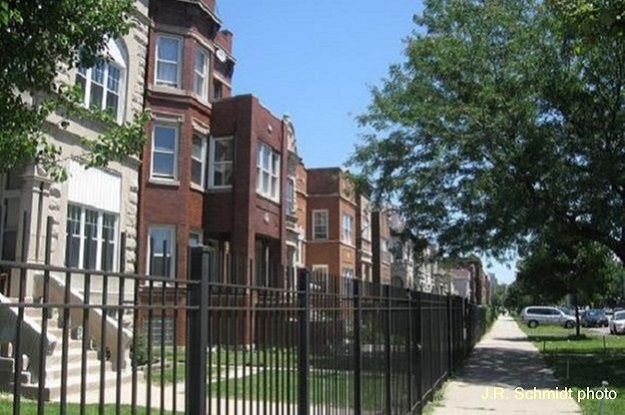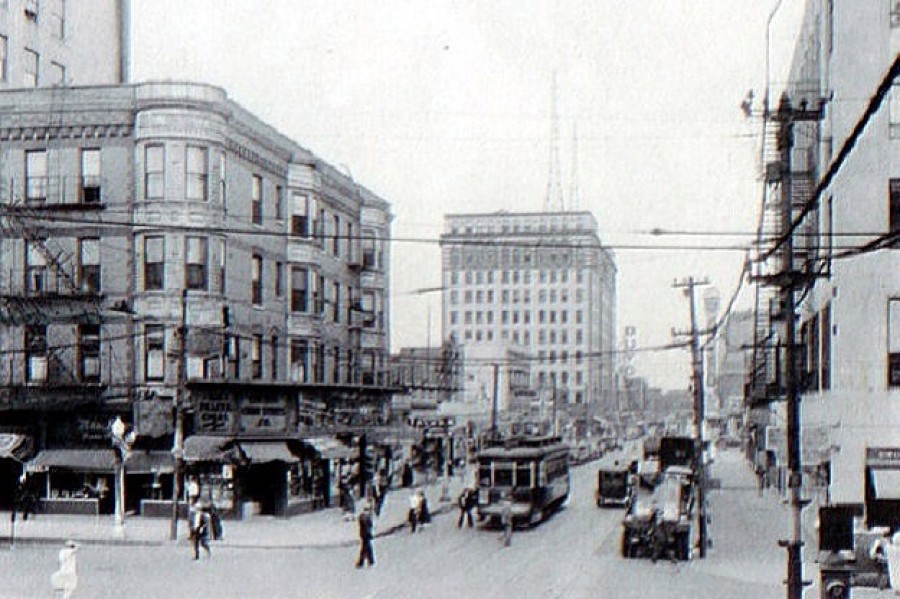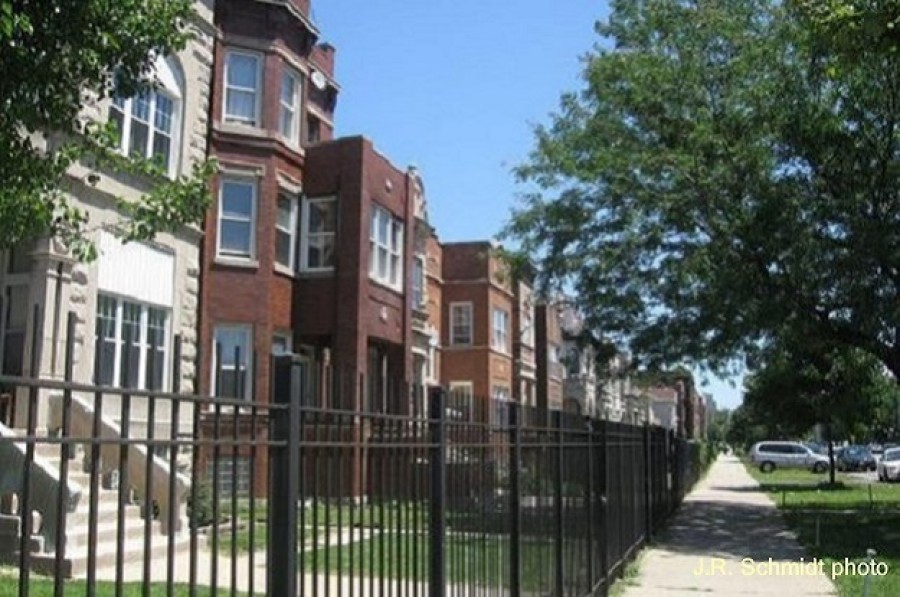West Garfield Park, past and present
By John R. Schmidt

West Garfield Park, past and present
By John R. SchmidtIn 1869 the West Side Park Board created three major parks. One of them, Central Park, was later renamed Garfield Park. The neighborhood immediately west of this park is Community Area 26–West Garfield Park (WGP).
Settlement here began in the 1840s, when a plank road was laid along the line of Lake Street. Chicago’s first railroad came through the area in 1848. The railroad became the Chicago & North Western, and later built train shops near today’s Keeler Avenue.

But it was the park that really got the community going. New construction sprang up in the area around it. There were single family homes and some large apartments, though two-flats were predominant. Graystone was popular.
A gentlemen’s trotting club operated along the east side of Crawford (Pulaski) south of Madison. Gambling kingpin Mike McDonald took over the track in 1888. The Garfield Park Race Track became the center of controversy, as neighbors feared for their property values. There were shootings and one near riot. The track closed for good in 1906.

In 1893 the West Side’s first elevated railroad–another Mike McDonald project–went up over Lake Street. This line was soon joined by the Garfield Park ‘L’ at Harrison Street. Now downtown Chicago was only minutes away. More people flocked to WGP.
The community reached residential maturity in 1919. The largest ethnic group was the Irish, and the St. Mel’s complex on Washington Boulevard took on impressive proportions. There was also a significant Russian Jewish settlement.
WGP’s boom continued into the 1920s. The shopping district along Madison Street was one of the busiest outside the Loop. The 4,000-seat Marbro Theater was among the city’s largest. The nearby Paradise was slightly smaller, but was often called “the world’s most beautiful movie house.”
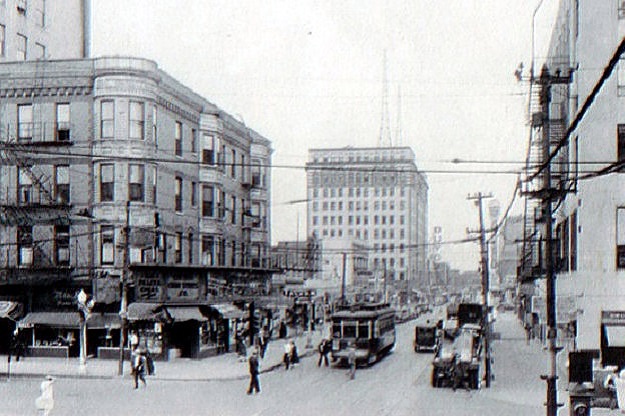
Cultural institutions included an active West Side Historical Society and the Legler Regional Branch of the Chicago Public Library. Paradise owner J. Louis Guyon opened a new hotel down the block from his theater. The Midwest Athletic Club was completed in 1928, the tallest building between the Loop and Des Moines, Iowa.
Then came the Great Depression, followed by World War II. WGP stagnated, but remained stable.
During the 1950s, African-Americans began moving into the community. They were usually met with hostility. Panic-peddling by real estate companies scared long-time residents into selling. Others were forced out by construction of the Congress (Eisenhower) Expressway. WGP changed from all-White to all-Black within 10 years.
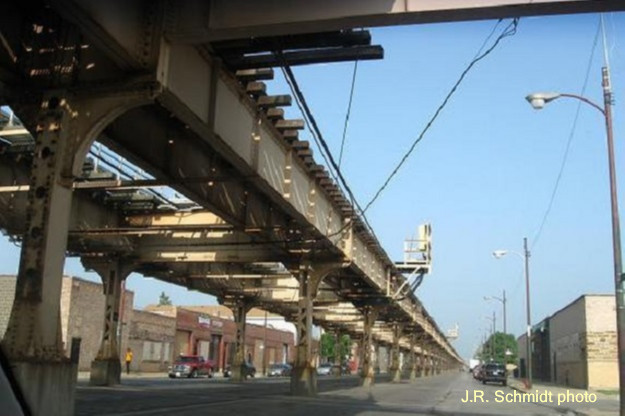
Many homes and businesses were destroyed in a 1965 riot. The trouble developed after a fire truck leaving the Wilcox Street firehouse knocked over a light pole, killing a woman. More of WGP burned down following the murder of Martin Luther King Jr. in 1968. The big movie theaters closed, major retailers left. Crime rose.
Now people began moving out. Vacant lots became common. In 1961 CTA had added a new Kostner station to its Congress (Blue Line) ‘L’ route, to take care of heavy patronage. Less than 20 years later, the station was shuttered.
Jimmy Carter came to WGP in 1986. The ex-president was working with Habitat for Humanity, and personally helped construct new homes at the corner of Maypole and Kildare. Despite their pedigree, the buildings became derelict. They were torn down a few years ago.
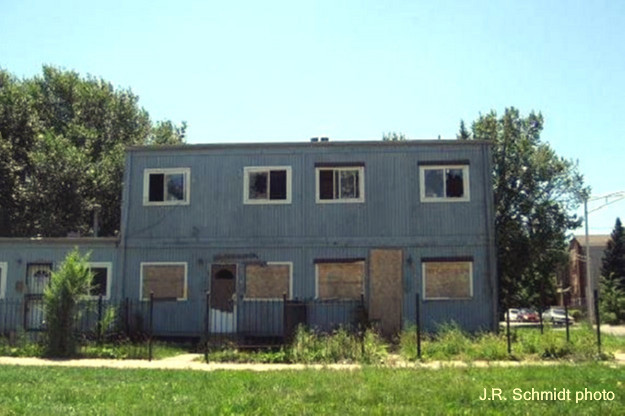
No one can deny that WGP has problems. Yet there are positives. There are still stores at Madison-Pulaski, and they still draw customers. Compare this to the fate of another old-line shopping district, 63rd-Halsted.
Some blocks have been rehabbed. The Tilton School is an architectural gem designed by Dwight Perkins. The nearby Garfield Park Conservatory draws people to the area.
A century ago West Garfield Park promoted itself as being “only five miles from the Loop.” That location is still a selling point. Perhaps the next economic boom will bring better times to the community.
